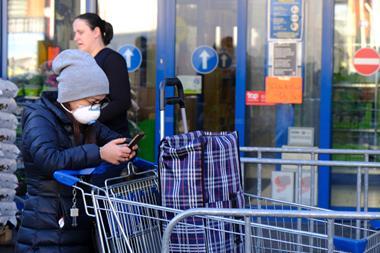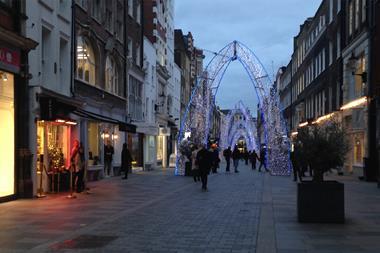Retail sales recorded a year-on-year uplift in October, which British Retail Consortium (BRC) boss Helen Dickinson says demonstrated many retailers “finding their footing” prior to the second lockdown.
Total retail sales increased 4.9% in the four weeks to October 31 against a decline of 0.3% in the same period the previous year, in line with three-month average growth of 4.9% and ahead of the 12-month average decline of 0.7%.
According to the BRC-KPMG Retail Sales Monitor, UK retail sales – excluding temporarily closed stores and including online sales – increased 5.2% on a like-for-like basis.
On a three-month basis, in-store sales of non-food items fell 9% and 11.4% in like-for-like and total terms respectively – a marked improvement from the 12-month average decline of 19.6%.
Non-food sales rose 39% online during the period, against 3% growth the previous year, as the rate of online penetration increased from 31.7% in October 2019 to 42.3% this October.
Grocery sales increased 5.2% in the three months to October in like-for-like terms, up 5.8% on a total basis. This represents an increase on the 12-month average growth of 4.2%.
BRC’s Dickinson said: “October saw another month of strong sales growth, with food, gifts and loungewear high on peoples’ shopping lists. Tightening restrictions across the United Kingdom and speculation towards the end of the month of an England-wide lockdown prompted customers to stock up on home comforts and food supplies.
“During an incredibly challenging year for the industry, many retailers had finally thought that they were finding their footing. The new lockdown in England will now throw away this progress as we enter the crucial Christmas trading period, and we estimate that £2bn of sales per week will be lost this month.
“It is therefore vital that retailers are able to trade from December 3 and we are asking government to urgently provide clarity about the criteria for reopening and to ensure that affected businesses are supported in the coming months.”
KPMG’s retail partner Don Williams added: “The gap between winners and losers is stark with home-related items, like furniture and technology, putting in a strong performance while the improvement in fashion sales was short-lived. Online sales remain high and are set to grow further during Black Friday and lockdown.
“Not all retailers are in a position to take advantage of this shift in customer behaviour, which has been accelerated by circumstance and for many is now both choice and habit.
“The important Golden Quarter is likely to be unrecognisable this year, with some retailers losing a month’s worth of trading opportunity. Capacity is also likely to be a significant challenge over the coming months as there is a limit to online delivery availability and social distancing has reduced the numbers of customers that can safely shop in store at any one time.
“Some retailers will thrive in the new environment; others will find it bleak. The locked-in step-up in online activity will undoubtedly lead to further investments in digital capability and partnerships. Digital strategies have never been more vital, but those strategies must be cost-efficient, too.”


























No comments yet